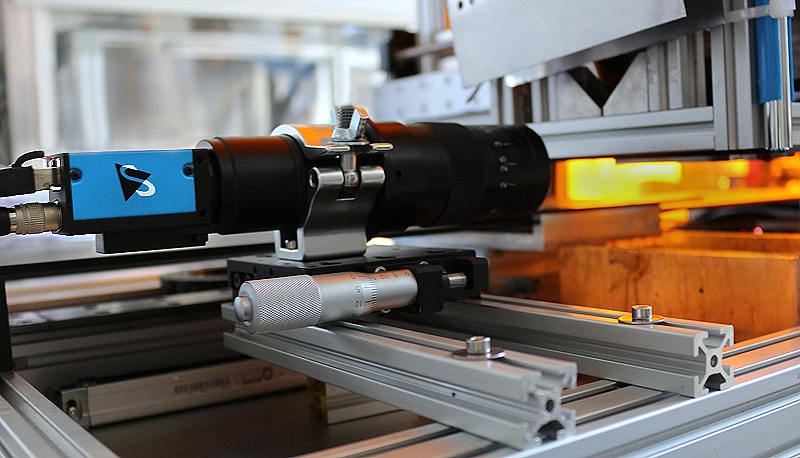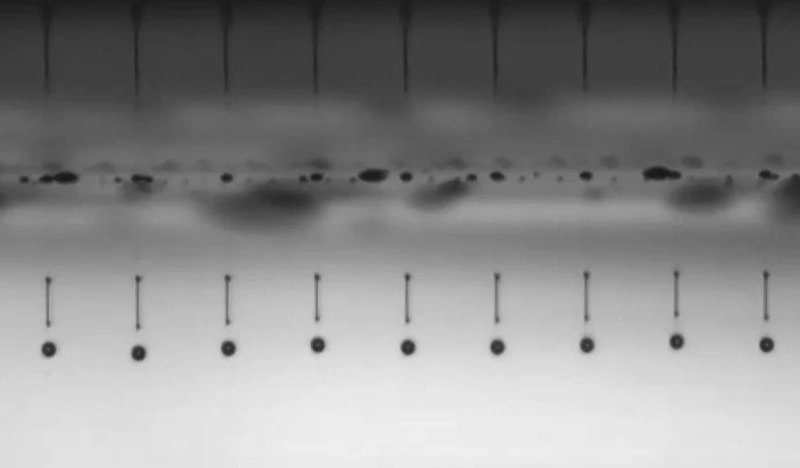Mind the Gap: Dropwatching with Machine Vision
Published on May 1, 2017 by TIS Marketing.
The following is an overview of an inkjet technology workshop and their use of the DMK 33GP031. For more technical information about how the DMK 33GP031 was used in the iPrint workshop lab, please see the interview here.
Since the 1970s when inkjet printing first became commercially viable, the technology has commanded the continued interest of researchers. In short, it is a no-contact method for the digital delivery and positioning of extremely small volumes of material or fluid with precision and high frequency. Inasmuch, inkjet technology is fundamentally a form of additive manufacturing; currently used in printed electronics, direct printing, ceramics and textiles and even with experimental jetable fluids and substrates such as live-cell printing for biofabrication, organic semi-conductors and organic light-emitting diodes. The Institute for Printing (iPrint) at the College of Engineering and Architecture at the University of Applied Sciences of Western Switzerland began offering an inkjet training course in 2015 which provides multidisciplinary professionals a week of theoretical and practical training with the various components of inkjet systems.

During the course, participants learn a key aspect of the printing process is determining the print quality delivered by an inkjet print head. This monitoring process begins with the properties of the jetted drop: the drop velocity, jetting direction, presence of satellite drops and drop volume. These droplet properties must be tightly adjusted in order to achieve and maintain the precision required by the application at hand. Machine vision systems are used to image the droplets during printing which allows for the continuous measurement of droplet properties - a process known as dropwatching. There are many possible imaging configurations for dropwatching, each with its own advantages: nozzle plate analysis, multi-camera dropwatching, overlaid imaging, multi-wavelength dropwatching or dropwatching in the printing gap. For their course, iPrint selected The Imaging Source's DMK 33GP031 industrial monochrome cameras. Regardless of which method is preferred, dropwatching is critical for performance optimization, print system (or print head) analysis, reliability verification and monitoring of the printing process.

As iPrint notes on their website, [inkjet research is] "by its very nature, multidisciplinary as it requires cutting-edge skills from various domains, notably those of mechanical engineering, chemistry and nanotechnologies." Typical participants are highly-skilled engineers or chemists who are experts in one area of inkjet but who might have only a limited working knowledge of other aspects of the technology; these participants are looking to broaden their knowledge base and develop a cross-system awareness of the entire process.
